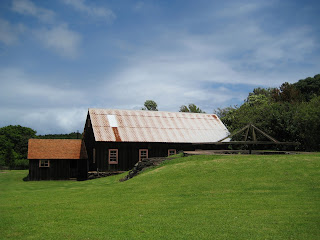Who are Hawaiian Citizens and Hawaiian Subjects?
"Nationality" means the legal bond between a person and a State and does not indicate the person's ethnic origin. Everyone has the right to a nationality. (European Convention on Nationality)
One of the earliest laws in Hawaiʻi dealt with citizenship (nationality - not ethnicity;) it was part of King Kamehameha III’s Statute Laws 1845-1846. The Chapter for that law was headed: “Of Subjects and Foreigners” and the specific Article was labeled “Aliens, Denizens and Natives.”
Following is the law concerning Hawaiian citizenship, part of King Kamehameha III’s Statute Laws 1845-1846 (first, the original law in Hawaiian; then, the English translation:)
Pauku 3. O na kanaka a pau i hanau malalo o ka malu o keia Aupuni, ina na na makua o ke Aupuni e, a ina na haole hoohiki i kanaka Hawaii, a ina na na kanaka maoli, a me ka poe i hanau ma ka aina e, ina no keia Aupuni na makua, a mahope hele mai na keiki e noho haanei, e manaoia kela poe a pau, he aie i ka hoolohe i ka Moi, ke alii ka lakou ma ka hanau ana, a e kau no ke kanawai o keia Aupuni maluna o lakou. o na kanaka a pau i hanau ma na aina e, ina no ka aina e na makua, a hoohiki ole hoi e like me ka olelo iloko o keia haawina alaila. e manaoia lakou he lahui e, a e hanaia'ku lakou e na'lii o keia Aupuni pela, e like nae me ka olelo o ke kanawai.
Section III. All persons born within the jurisdiction of this kingdom, whether of alien foreigners, of naturalized or of native parents, and all persons born abroad of a parent native of this kingdom, and afterwards coming to reside in this, shall be deemed to owe native allegiance to His Majesty. All such persons shall be amenable to the laws of this kingdom as native subjects. All persons born abroad of foreign parents, shall, unless duly naturalized, as in this article prescribed, be deemed aliens, and treated as such, pursuant to the laws. (Ka Huli Ao Digital Archives – Punawaiola-org)
Hawaiʻi followed the Anglo-American common law rule of “jus soli;” those born in the country and subject to its jurisdiction is a citizen. The common law rule traces back to the Norman Conquest of England in 1066.
Subsequent interpretation of the laws and practices affirmed who were Hawaiian citizens and what rights and obligations they possessed.
In 1850, HW Whitney, born in Hawaiʻi of foreign parents, asked the Minister of the Interior, John Young II, about his status. The question was referred to Asher B Bates, legal adviser to the Government, who replied that, “not only the Hawaiian Statutes but the Law of Nations, grant to an individual born under the Sovereignty of this Kingdom, an inalienable right, to all of the rights and privileges of a subject.” (Hanifin)
In 1856, the Kingdom’s Supreme Court decided Naone v. Thurston, recognizing that persons born in Hawaiʻi of foreign parents were Hawaiian subjects.
On January 21, 1868, the Minister of the Interior for the Hawaiian Kingdom, His Excellency Ferdinand Hutchison, stated the criteria for Hawaiian nationality:
“In the judgment of His Majesty’s Government, no one acquires citizenship in this Kingdom unless he is born here, or born abroad of Hawaiian parents, (either native or naturalized) during their temporary absence from the kingdom, or unless having been the subject of another power, he becomes a subject of this kingdom by taking the oath of allegiance.”
With respect to ‘Native Subjects,’ another early document (Resolution by King Kamehameha III, dated June 28, 1847,) from Ka Huli Ao Center for Excellence in Native Hawaiian Law, William S. Richardson School of Law, notes in its English translation of the original Hawaiian text that “na kanaka maoli” translates to “native subjects.”
The Hawaiian version of that resolution starts: “No ka mea, ua oi aku ka waiwai paa iloko o na Kulanakauhale o keia Aupuni no ka lawe ana mai o na haole i ko lakou dala, a me ka lakou hana ana maanei, a no ka mea hoi, ua makemake ka Poe Ahaolelo o ka Moi, e haawi aku ia poe haole i na pono a me na pomaikai a pau e hiki ai me ka poino ole o na kanaka maoli …”
The English translation the text as: “Whereas, The value of real estate in the principal towns of the Hawaiian Kingdom, has been greatly increased by the outlay of the capital of foreigners: and Whereas, It is the desire of His Majesty's government to bestow every favor and privilege upon such foreigners not inconsistent with the best interests of the native subjects …”
Subsequent laws through the Republic, Territory and State provide that "All persons born or naturalized in the Hawaiian Islands, and subject to the jurisdiction of the Republic, are citizens thereof."
The text and translation of documents here are from Ka Huli Ao Center for Excellence in Native Hawaiian Law, William S. Richardson School of Law.
The image shows what is often described as the Kānaka Maoli flag and is used today as a symbol for Hawaiian sovereignty.
Follow Peter T Young on Facebook
Follow Peter T Young on Google+
© 2013 Hoʻokuleana LLC




.jpg)





-1822.jpg)
.jpg)
.jpg)
